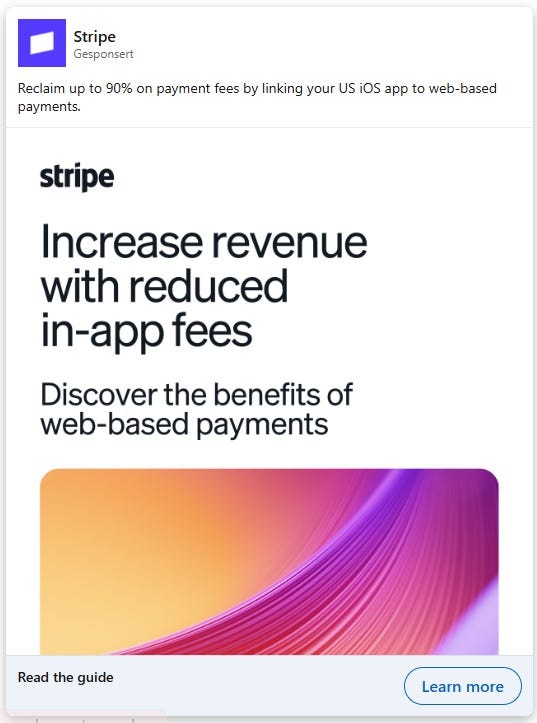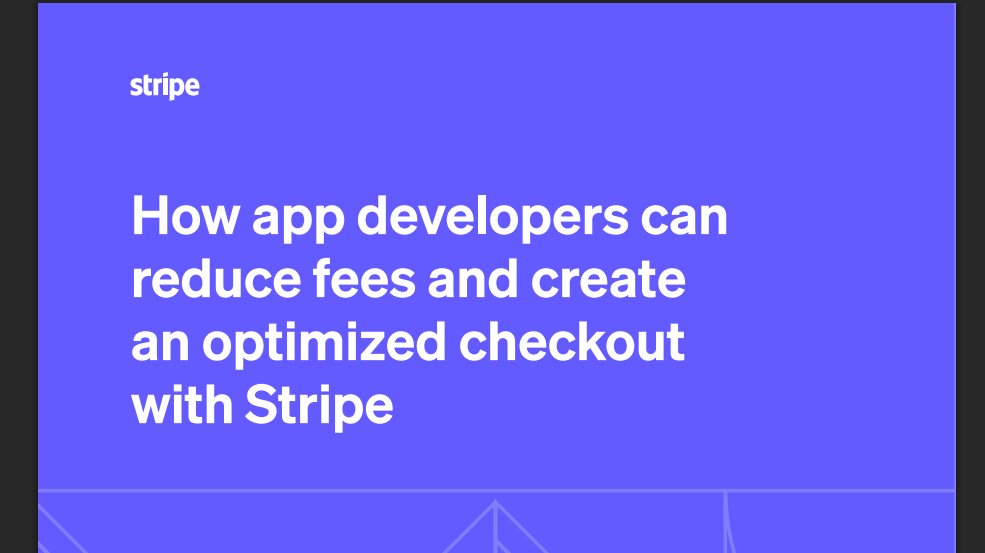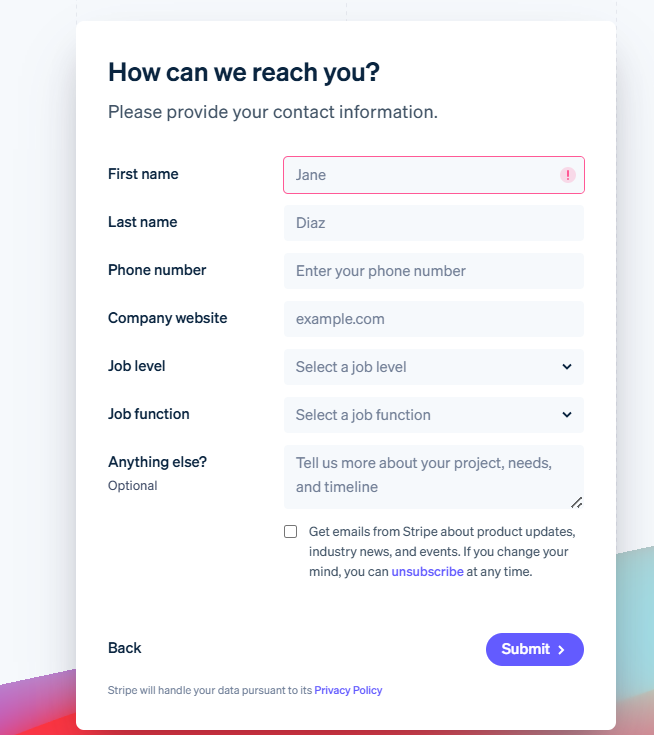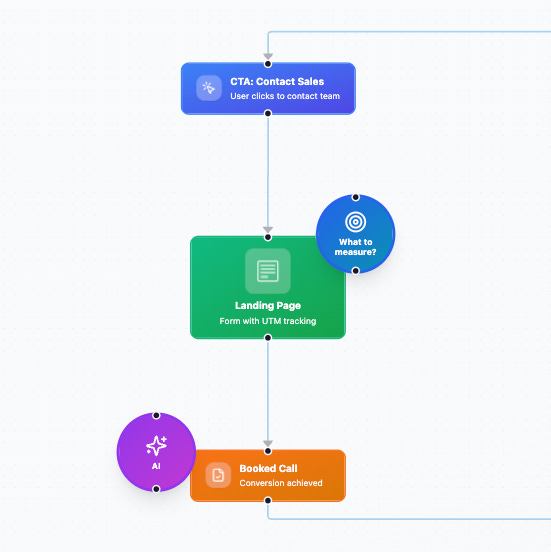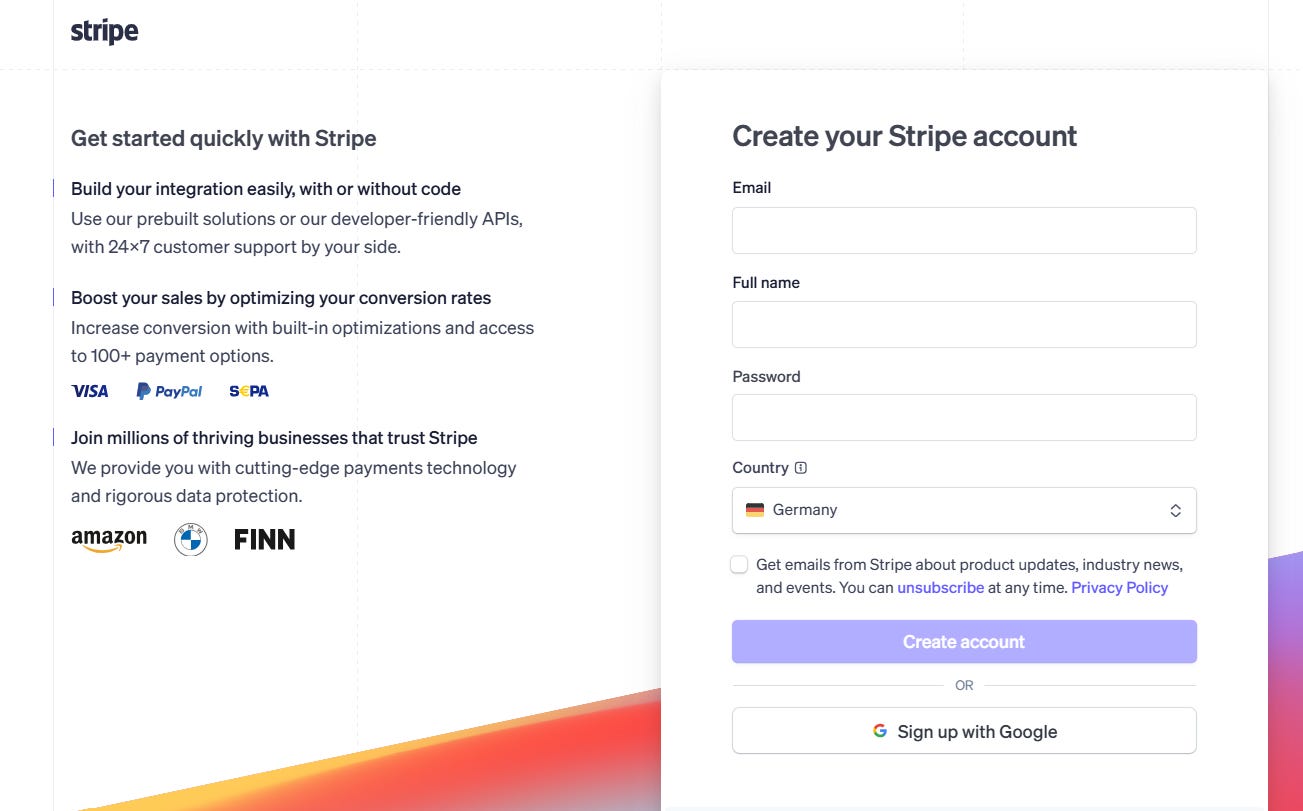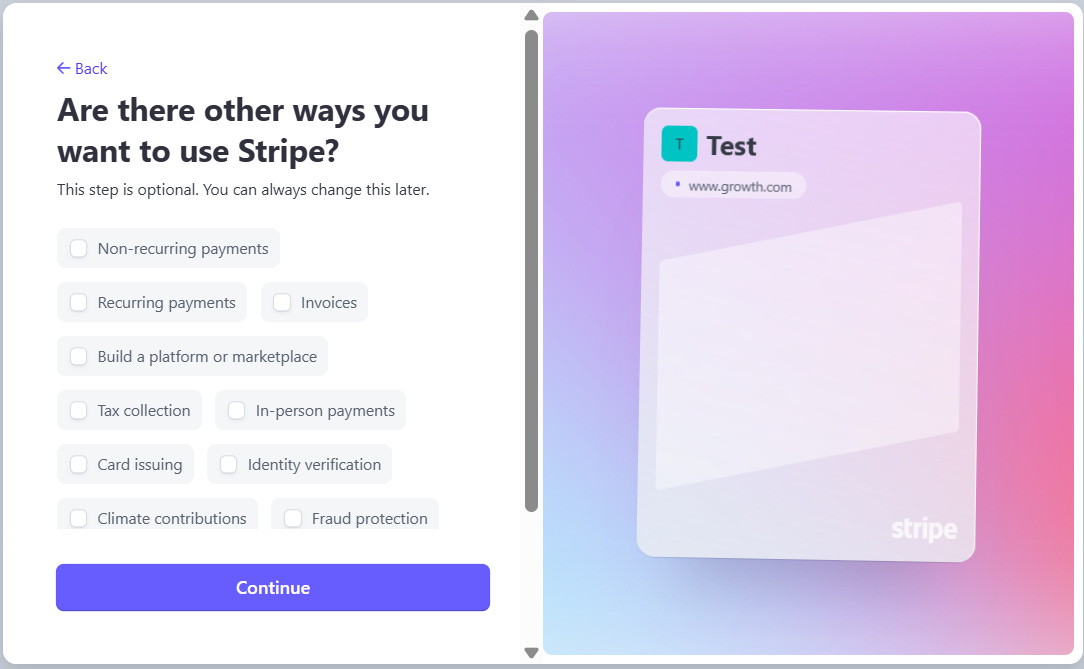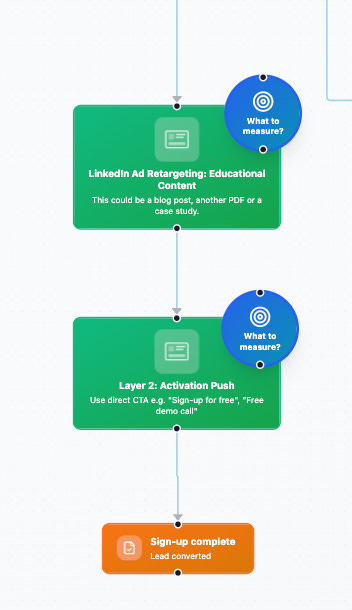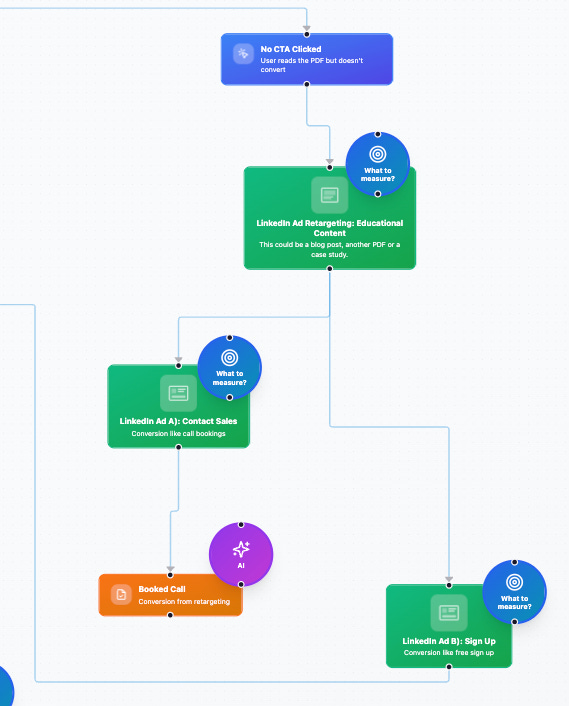How to Generate High-Quality Leads with Stripe's Ad Playbook
Breaking down the complete system behind Stripe's ad tactic - and how we rebuilt it for our business.
Hi, it’s Andreas - and I’m back with my newsletter “The Growth Architect”.
I recently stole one of Stripe’s ad tactics and it worked way better than I expected. It’s not something you see often, which is kind of the point. In this article, I’ll talk about why it works and how I built it… or well, how I’d build it if I were Stripe, based on what my team built.
Let’s jump in.
When I was breaking down Stripe’s complete sales funnel a while ago, something caught my eye.
They had a pretty smart ad tactic that got me thinking. And as we were revamping our own strategy, I adapted it.
Turns out it worked better than expected. We generated a decent number of leads for around $20 CPL.
So I wanted to dive deeper into this ad tactic and show you how the growth system after conversion looks under the hood.
(Of course, I can’t see into Stripe’s actual system — I’m speaking hypothetically here, and I’ll use Stripe as the example to show you how we built the system.)
LinkedIn ads as an entry point
It starts with one ad.
And this ad stands out because not many companies do this.
Stripe uses non-gated PDFs. All information is available. No paywall where you “pay” with your data. No form asking for your email. No shady newsletter signup.
Why does this work?
Because ,ore people actually read it when there’s no barrier.
💡 And gating is kind of dead anyway.
A recent survey found 81% of people abandon the sign-up process for gated content, and many marketers report being overwhelmed with “junk leads” from poorly converting forms (Three29).On a side note, I’m still using it, but only when the content is worth it. For example, we created a tool in Lovable that helps our audience perform a self-assessment. This is gated.
But what is definitely dead is gating a PDF and holding back information that should be publicly available (or is already available elsewhere).
Back to Stipe’s ad.
This is it:
Click on the ad and you’re directed to this PDF:
As you read through the PDF, you eventually hit the call to action section at the end.
This one is sneaky because it’s super subtle - three call to actions in the text without any buttons. And I like it very much because it doesn’t scream “I NEED THE CONVERSION URGENTLY”.
So, those three CTA options are:
Read our guide → more information and content
Contact our sales team → conversion
Sign up for an account → conversion
This single ad tactic gives us one entry point into Stripe’s (potential) growth system. And from here, the system branches into three paths.
How I Stripe’s Growth System (Might) Look Like
So, we have three possible paths someone can take:
A) Someone converts directly through “Contact our sales team”
B) Someone converts directly through “Sign up for an account”
C) Someone reads more content and then converts later. Or they forget to fill out the form because something came up. (You’re laughing but that happens a lot.)
So, let’s break down each path.
Path A: Direct Sales Conversion
When someone clicks “Contact our sales team,” they’re routed to a form that asks questions. This is good because it segments them right away.
But here’s the problem - the information about where they came from is missing.
Stripe could add a UTM parameter to the link that passes the information that you’re coming from the PDF and which specific ad brought you there. Because in my world UTMs are the difference between “a lead” and “a hot lead with context”.
If you are not familiar with UTM links. This is how the link would look like:
https://stripe.com/en-de/contact/sales
?utm_source=linkedin-ad (-> shows source)
&utm_medium=guide (-> shows campaing)
&utm_campaign=how-app-developers-can-reduce-fees (-> shows exact PDF)
&utm_content=contact-our-sales-team-link (-> shows clicked CTA)💡 UTM parameters, why is it important?
UTM parameters are generated links that contain necessary information, such as where someone came from, which campaign they interacted with, and any other details you want to pass along through the link.Why is this important? Imagine your sales team starting a conversation or reaching out to a prospect - it gives them icebreakers like, ‘Oh, you read the PDF. What did you think about XY (name a passage in the PDF)?’ That serves as an entry point and a hook, making your BDRs’ lives easier.
UTM parameters can then be picked up in the form itself (e.g. HubSpot offers this without coding knowledge).
With it you pass all data directly into your CRM, which gives sales all the context they need: where the lead came from, which ad they saw, plus everything they filled out in the form.
Here, the flow becomes: Someone reads the PDF → goes to landing page → fills out form, books a call → sales has full context for the conversation.
Path B: Self-Service Sign Up (That Needs Nurturing)
Stripe is lucky here.
They’re not a typical SaaS with a freemium-to-paid conversion problem. If someone signs up and uses Stripe for payments, Stripe gets a cut every time that user sells something = Lock the user in, make good money.
But what if someone signs up just “to have a look” and never actually uses the tool? This is where Stripe needs nurturing to push them toward activation.
Let’s start with the sign-up form.
Btw. the form is nice - Stripe uses social proof with logos and name dropping on the left side.
But same problem as before - no UTM links.
The origin of the lead can’t be stored on the contact.
I’d fix this the same way:
https://stripe.com/en-de/contact/sales
?utm_source=linkedin-ad
&utm_medium=guide
&utm_campaign=how-app-developers-can-reduce-fees
&utm_content=sign-up-for-an-accountThis gives the team visibility into where leads came from so you can pass them segmented and personalized content.
After someone creates an account, Stripe does the smart thing - they ask what you’re using Stripe for.
This is where segmentation happens.
With our UTM tweak, Stripe would now store three critical pieces of information:
A) Where the lead converted from (LinkedIn ad via PDF guide)
B) What they’re using Stripe for (e.g., “Tax collection”)
C) Which target group they’re in (e.g., app developers from the PDF targeting)
This data powers super personalized nurturing for users who sign up but don’t activate.
We can run this through two channels: retargeted ads and email nurture.
The retargeting ad campaign would be a two-step LinkedIn sequence targeting users who converted but aren’t using the product:
Step 1: Promote a case study showing how app developers successfully use Stripe for tax collection. (We know they’re app developers from the PDF targeting, and we know they want tax collection from the segmentation question. Perfect match.)
Step 2: Direct conversion ad. They signed up, they engaged with the case study, now hit them with “Use Stripe now” and link to activation steps.
The email nurture campaign would run parallel with triggered emails based on user actions:
Email 1: Welcome + quick setup guide (show them the fastest path to value)
Email 2: Use case focused content (deep dive on tax collection for app developers)
Email 3: Social proof (case study showing success with their exact use case)
Email 4: Direct conversion push (clear CTA to start using the product)
…
The combination of retargeting ads and email nurture gives multiple touchpoints to push inactive sign-ups toward activation.
Path C: The Browsers Who Need More Warming
This is for people who clicked the PDF but didn’t convert yet. Maybe they’re still researching. Maybe they got distracted. Either way, no conversion happened.
Here’s the challenge - even with UTM parameters in place, we can’t capture any data until someone actually converts in our system. So how do we move these people forward?
We work with what LinkedIn gives us: people who clicked on the PDF.
That’s our signal that we have relevant, interested prospects.
Here I’d build a 3-layer retargeting campaign based on that PDF click:
Layer 1: Show them a case study about how app developers successfully use Stripe for tax collection. Same ad as in Path B - doesn’t matter if the exact use case matches. You just want to demonstrate someone got real value from the tool.
Layer 2: More social proof or a different angle on the same use case. Keep building credibility.
Layer 3: Direct conversion offer. Test two variations here - “Talk to sales” versus “Sign up for an account.” At this point they clicked the PDF, engaged with two case study ads, so they’re clearly interested → Time to ask for the conversion.
If someone books a call?
Perfect - they go to sales with context. If someone signs up? They get funneled into Path B’s nurturing system because now the segmentation starts and you can activate them if they don’t use the tool.
Final Words
This is how I’d build Stripe’s growth system based on one single LinkedIn ad entry point.
(And this is how I built ours after getting inspired by this ad.)
It’s not magic:
Non-gated content that actually gets read (90% fewer dropoffs)
UTM tracking that feeds your CRM with real attribution data
Segmentation questions that make personalization possible
Multi-channel nurturing through retargeting ads and email sequences
Behavioral retargeting based on what people actually do, not hunches
This generates high-quality leads and converts them into calls without losing potential customers to gated PDFs.
Community readings that you might enjoy as much as I do:
→ Every business is becoming a media business -
→ How does the algorithm decide who will see my notes?
→ I’m a marketer, but I didn’t sign up for this -
PS: If you enjoyed this, please tap the like button below. Thank you! 💛



